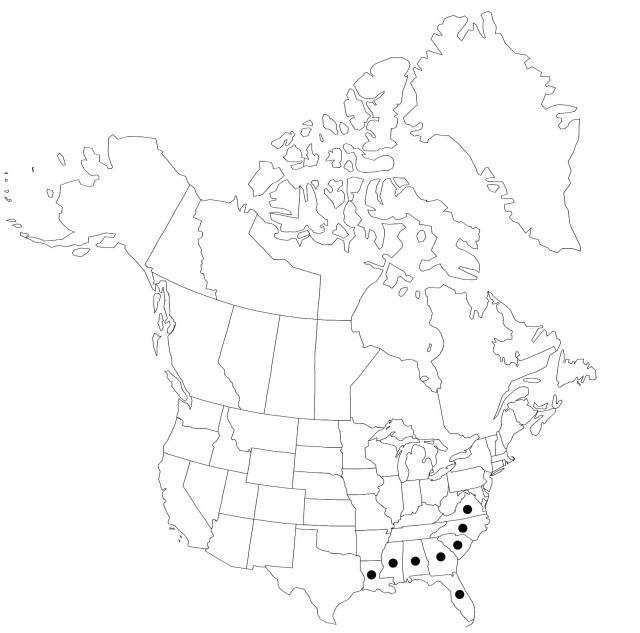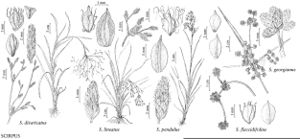Scirpus lineatus
Fl. Bor.-Amer. 1: 32. 1803.
Plants cespitose; rhizomes short, stout. Culms: fertile ones lax, reclining, inflorescences lopping over to (or nearly to) ground; nodes sometimes with axillary bulblets. Leaves 4–9 per culm; sheaths of proximal leaves whitish; proximal sheaths and blades with septa few, inconspicuous; blades 18–32 cm × 6–13 mm. Inflorescences terminal and axillary in 2–3 distal leaves; rays ascending or divergent, rays and pedicels scabrous or scabrellous throughout or sometimes only in distal 1/2, rays often bearing axillary bulblets; bases of involucral-bracts green, not glutinous. Spikelets in open cymes, central spikelet of each cyme sessile, others long-pedicellate, spikelets ovoid, narrowly ovoid, or narrowly ellipsoid, 4–7 (–10) × 2–3 mm; scales brown to redbrown with green midribs, ovate to narrowly elliptic, 1.8–2.5 mm, apex mucronate, mucro 0.1–0.3 mm. Flowers: perianth bristles persistent, 6, slender, much longer than achene, strongly contorted and not or scarcely projecting beyond it, smooth, enclosed within scales or scarcely projecting beyond them; styles 3-fid. Achenes pale-brown, elliptic in outline, planoconvex or plumply trigonous, 1.1–1.5 × 0.6–0.7 mm. 2n = 36.
Phenology: Fruiting late spring–early summer (May–Jun).
Habitat: Usually along wooded streams, often associated with calcareous substrates
Elevation: 0–100 m
Distribution

Ala., Fla., Ga., La., Miss., N.C., S.C., Va.
Discussion
Authors prior to 1966 incorrectly applied the name Scirpus lineatus to plants of S. pendulus and treated plants of S. lineatus as S. fontinalis (A. E. Schuyler 1966).
Selected References
None.
Lower Taxa
"shortened" is not a number.
